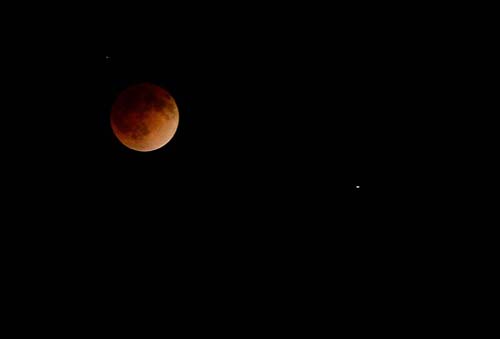No better place to enjoy brilliant night skies
The Salt Lake Tribune"Star light, star bright, first star I see tonight."
Is it possible the popular nursery rhyme may be less frequently whispered at bedtime nowadays as light pollution from urban centers makes it nearly impossible to see any stars let alone galactic wonders like the Milky Way?
One place remains, though, where the stars can be seen before the sun even sets, and visitors are encouraged to embrace "the dark side."

Photo by Francisco Kjolseth
"Bryce [Canyon National Park] will always be famous first and foremost for the geology, the amazing rocks like nowhere else on planet Earth," said Kevin Poe, the lead "dark ranger" at the national park. "We are trying to get people to feel more comfortable in darkness and to realize that it is part of the wilderness experience and not something to be afraid of."
Long before Bryce became a national park in 1927, visitors had been taking in the area's night skies. Dark rangers such as Poe take time to talk about the constellations of the Piute tribe during free astronomy programs offered every Tuesday, Thursday and Saturday night May through October at the visitors' center.
Twice a month the parks holds free full-moon hikes. During the summer those hikes explore the trails below the rim. In the winter months, when snow allows, the full moon hikes become snowshoeing excursions on the rim of the canyon.
Visitors from around the globe plan trips to Bryce years in advance to attend the annual Bryce Canyon Astronomy Festival, which begins Wednesday.
"I get an email about once a week from people all over asking what the festival dates are one or two years out," Poe said. "People are fascinated by the parks and the night-sky programs are kind of a new way to experience the National Park Service."
Patrick Wiggins made his first trip to Bryce to put on an astronomy program nearly three decades ago while working for the old Hansen Planetarium. He remembers his boss at the planetarium making the trip for years before he started.
"It's a magical place. There is just something about that place. It is so beautiful during the day and you get all those amazing views and then at night the skies erupt onto you," said Wiggins, who serves as the NASA solar system ambassador to Utah. "It is not uncommon to have somebody from Las Vegas or Los Angeles in the middle of the program say something like, 'Oh darn, it is getting cloudy' and they point at the cloud. I tell them it's the Milky Way."
Wiggins has visited other global destinations to observe the night sky and has learned to appreciate the remote locations of southern Utah.
"I've been to some pretty decent spots and Bryce compares very favorably," Wiggins said. "Considering how close it is to major metropolitan areas, Bryce is amazing."
According to Poe, three National Park Service units in Utah are among the top in the nation when it comes to dark skies. Capitol Reef National Park and Natural Bridges National Monument are the other two.
But Bryce is leading the way in the NPS as a whole in promoting night skies programs and light pollution education.
The NPS Night Sky Team, part of the service's Night Sky program, was stationed at Bryce from 2004 to 2008 and up to 12,000 attend the annual festival. Poe said more than 37,000 visitors participate in the night-sky programs at Bryce over the course of the year.

Photo by Francisco Kjolseth
Not everybody is comfortable walking around the park in the dark.
s"I get people who ask me all the time why I am not afraid of the dark," Poe said. "I tell them that all they have to worry about here is bears and lions. That the real monsters carry guns and knives and live in places other than Bryce."
Sometimes convincing visitors of the value of the dark is a tough sell.
"We are not born with a fear of the dark; it is something we learn. It is our job to alleviate those fears a bit," Poe said. "It is like any phobia and it can eased with education."
Sharing the night wonders at Bryce is a special experience for volunteer dark ranger Kelly Ricks. She realized her interest in the night skies while driving by a Harmons grocery store in the Salt Lake valley.
Ricks was passing the store and noticed people and a bunch of telescopes in the parking lot. She turned around and was rewarded with her first glance of Saturn through a telescope.
The words she uttered during that experience often are used by people she invites to telescope at Bryce.
"They look at Saturn and say, 'No way. That is fake. It's just a picture'," Ricks said. "It is just the opposite when they look at the moon. They say, 'It looks so real.' "
